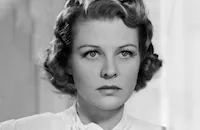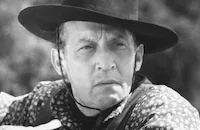Women Are Trouble

Brief Synopsis
Cast & Crew
Errol Taggart
Stuart Erwin
Paul Kelly
Florence Rice
Margaret Irving
Cy Kendall
Film Details
Technical Specs

Synopsis
Following a series of robberies and murders perpetrated by the Tim Gleason gang, Eldridge, the head of the liquor control board, announces that he has information that will finally bring the gang to justice. Meanwhile, Matt Casey, a reporter for The Star tells his editor, Bill Blaine, that he has the same inside information as Eldridge. While they are talking, Ruth Nolan, a small town girl, interrupts them and asks for a job, but Bill doesn't take women reporters seriously and turns her down. Ruth determines to get an exclusive with Eldridge, and follows him, but instead of an interview, she witnesses his murder when his car is pushed off a wharf by a truck. Bill gives Ruth a job after her scoop, but Matt still thinks that women shouldn't be reporters, and refuses to work with her. He then traces the truck used in the murder and helps the police arrest the driver, Murty. When Bill sends Ruth and Matt to the police station to interview Murty, Matt makes her stay in the car in the alley. While she passes the time taking pictures, she accidentally photographs a man carrying a camera. Soon Matt rushes to the car and reveals that Murty was shot by a man disguised as a cameraman. Though Ruth knows she has gotten the story, she doesn't tell Matt. After the disguised cameraman tells members of the gang about Ruth's photograph, they accost her and Matt as they enter The Star building, and take her camera. When Bill finds out what has happened he is furious, until Ruth shows him that she hid the film in her purse, thus enabling The Star to print the gunman's picture on the front page. Next, Ruth and Matt are assigned to interview Mrs. Murty. After Matt is thrown out of the apartment by Mrs. Murty, Ruth goes in and pretends to be a theatrical agent. She doesn't get a story either, but Bill helps her write a trumped up story about a friend of Eldridge's who is going to reveal his secret information to the police. Though Matt doesn't like Ruth's methods, he is attracted to her and becomes jealous when she agrees to go to the Press Club Masked Ball with Bill. To make Bill jealous, Matt decides to invite Frances, Bill's ex-wife, who still loves Bill, but only sees him when she comes for her alimony checks. Because she is wearing a mask, Bill doesn't recognize Frances and makes a play for her when Matt and Ruth are dancing. Unknown to the real guests, two gangsters have come to the ball to get Ruth out of the way and are wearing disguises. The two men follow her when Bill takes her home, then kidnap the couple. The next day, Bill fruitlessly tries to convince the gangsters that Ruth's story was a fake, but they don't believe him. They are about to shoot him when Matt, who trailed the men by tracking down the costumer from whom they rented their disguises, jumps into the apartment through the window and brandishes a gun. He loses the upper hand when Gleason arrives shortly thereafter, and orders his men to kill the three prisoners when the noise of the next passing elevated train can muffle the shots. Just then, Police Inspector Matson arrives with his men and saves Ruth, Matt and Bill. Finally, with the case closed, Matt decides that he likes women reporters after all, and Bill decides that it is cheaper to remarry Frances than to continue paying her alimony.

Director
Errol Taggart
Cast

Stuart Erwin

Paul Kelly

Florence Rice
Margaret Irving

Cy Kendall
John Harrington

Harold Huber
Kitty Mchugh

Raymond Hatton
George Chandler
Frank Jenks
Robert Livingstone
Wally Maher
Florence Lake
Frank Bruno
Phil Tead
William Pawley

Ethel Wales
Robert E. Homans
Harry Burns
Ines Palange
Frank Lackteen
Crew
Richard Blake
James K. Burbridge
George Harmon Coxe
Michael Fessier
Michael Fessier
Fredric Hope
Lucien Hubbard
Eddie Imazu
Oliver T. Marsh
Conrad Nervig
Douglas Shearer
Edward Ward
Edwin B. Willis
Dolph Zimmer

Film Details
Technical Specs

Articles
Women Are Trouble
By Violet LeVoit

Women Are Trouble
Quotes
Trivia
Notes
This film was Errol Taggart's first film as a director. According to information contained in Screen Achievements Bulletin, George Harmon Coxe's story was published, however, no other available sources call it a published story and no publication information has been located. As Coxe, who wrote many published short stories, also worked as a writer at M-G-M in the 1930s, his story was probably an original for the screen. Information in the file on the film in the AMPAS Library notes that although there was a Writer's Guild rule that producers were not to receive screenplay credit, the rule did not apply in this case. The reason for the exception was that Michael Fessier, who co-produced the film with Lucien Hubbard, actually wrote the entire screenplay and the only other writer credited by Screen Achievements Bulletin, Richard Blake, wrote a treatment that amounted to "far less that 15% of the total value of the screenplay." The memo continued that "the intention of the clause...was to keep producers from making minor changes in scripts and hogging all the credit, but that in a case like this...he should get sole credit for the screenplay."














